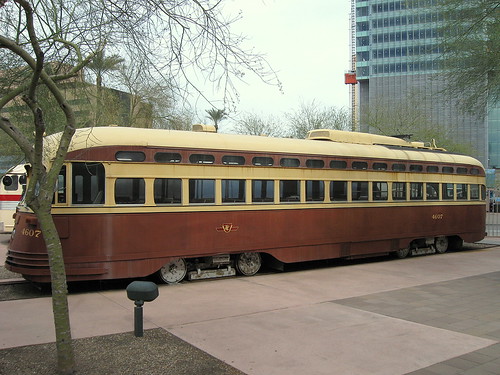
Over on the Spacing Toronto blog, I have discussed where some of Toronto’s old PCC streetcars have gone after serving duty. Five ex-TTC streetcars are in active service in Kenosha, Wisconsin, one being reused as a seating area for a rural burger joint, and one sits rusting in a field between Hamilton and Guelph.
I got to visit another member of the Toronto PCC dispora, in Phoenix, Arizona. PCC 4607, rebuilt in the 1980s and retired in 1995, was one of two streetcars shipped down to the Grand Canyon State. One is in active storage in Tucson as part of that city’s heritage streetcar route (more on that in a later post), and one sits along side two old Phoenix city buses in front of the downtown bus terminal, protected from vandals by a metal fence.
Metro Light Rail
Phoenix is also the latest US city to build a new light rail system. There is a single, 32-kilometre long route that connects most of the region’s main trip generators – Uptown Phoenix, a secondary office cluster and the cultural district; Downtown Phoenix, Sky Harbor Airport (via a shuttle bus), Downtown Tempe and Arizona State University. It also barely enters Mesa, North America’s second largest suburban municipality (after first-place Mississauga, Ontario and just larger than third-place Brampton, Ontario). Further extensions may take the LRT to the large Metrocenter Mall to the northwest and Downtown Mesa to the east.
ROW in Apache Boulevard, Tempe. Note new development on right.
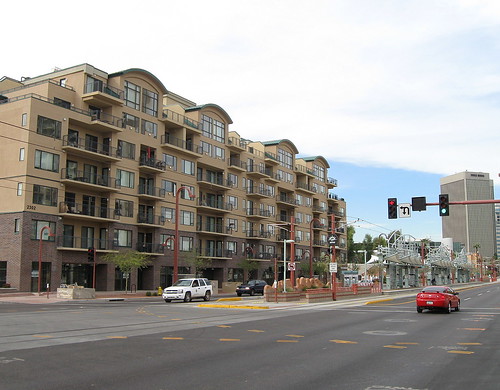
Avenues-style development on Central Avenue
The Valley Metro LRT runs entirely on the surface, mostly in the centre of major streets in reserved median. However, a few portions run on former railway spurs, particuarly in Tempe. The Kinki Sharyo partial-low-floor cars are always coupled in two-car trains, and are surprisingly well patronized, even in the evening hours. In each car is a section where bicycles can be stowed, and many stations have bike locks (all buses have bike racks here). Tempe, the most progressive city in the “Valley of the Sun”, has built a new transportation center with secured indoor bike storage amongst other amenities serving transit commuters.
Stations are minimalist, but have some flair. Interestingly designed shades protect against the Sun, and each stop has a water fountain. Vending machines at stop entrances sell tickets and passes – a day pass can be purchased (with a smart card, cash, credit or debit) for only $2.50 good on all buses and the LRT. Mid-level platforms allow for pure level boarding with the low-floor train doors, which load quickly. Art and interpretive plaques add some local identity and interest. While there are electronic displays, a next train countdown is missing, needed as trains come as infrequently as every 20 minutes in the evenings.
In a smaller metro area where transit’s modal split is low, LRT is an ideal use of technology to attract ridership. Phoenix’s wide roads certainly help making the lines easier to build, and mid-rise development is underway along the LRT in low-rise and sprawling Phoenix.
The service, with all-door loading and signal priority that actually works, the service makes surface LRT look like a very good technology. In Phoenix, left turn cycles at intersections don’t hold up transit, trains move near the speed of car traffic with signal priority, station spacing appears to be ideal, but varies based on the local area (the relatively vibrant Uptown district has closer spaced stations than industrial Washington/Jefferson). The only downside is the spotty frequency of service.
LRT interior, taken near northwest terminus of route in Phoenix.

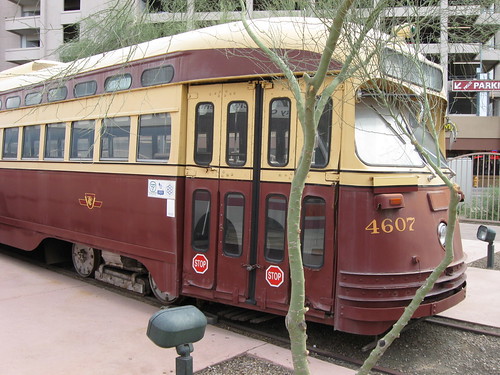
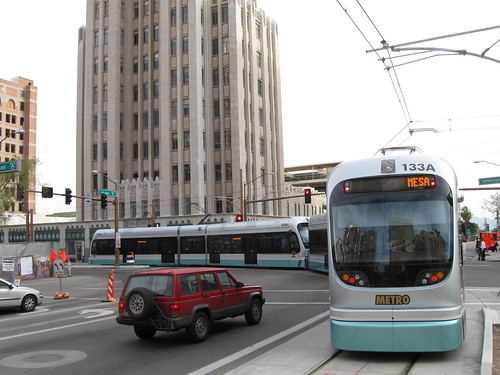
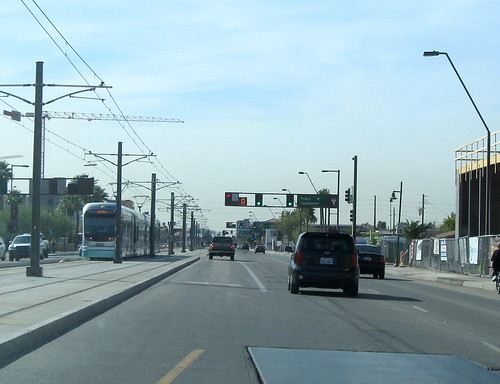
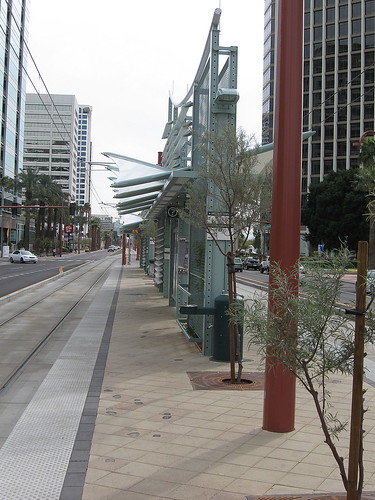
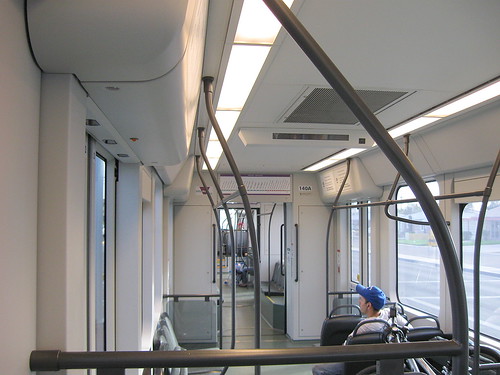
3 comments
Very good post. As a native Phoenician, I like when people write about our transit system and the development that has occurred on the line either in anticipation of our METRO’s construction or during construction.
I agree with Ed on the mention of the development along the line. We have some amazing opportunities ahead of us with this chosen route. The Central Avenue Line and the Mill Ave / ASU districts have a great start but the Apache Corridor and the Washington / Jefferson areas along with the Camelback Corridior have the potential to allow for some really exciting new TOD projects.
Thanks for the nice job covering our system! :-)
Definitely working in other Metro Areas although invariable some idiot trys to beat the train each year and gets killed. If only the construction cost were not so astronomical. I love riding light rail in comparison to bus. But even in the large metros the path the trains take is so limited and its so expensive to tear up existing infrastructure to build. Portland Oregon has had a terrific light rail system for years feeding both sides of the city. Salt Lake has s decent light rail system. The even have commuter trains which travel north to south for about 100 miles.